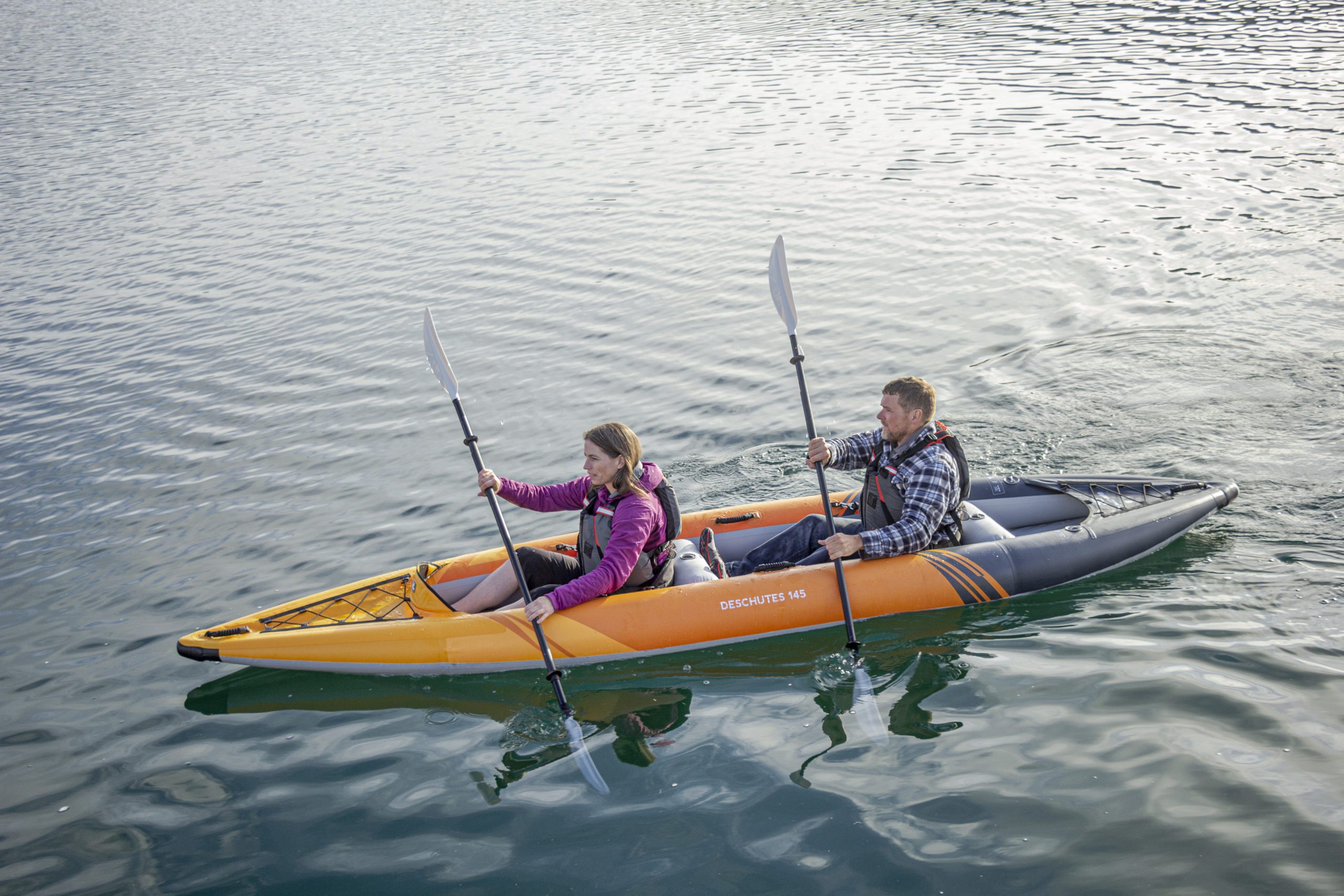
It Takes Two to Tango: How to Tandem Kayak
Tandem kayaking must be done with a partner, therefore it can be akin to learning how to ballroom dance. To perfect your form, it takes practice and patience – dialing in strokes rather than footwork. The reward? Speed and efficiency! Flying across your favorite lake with your paddling buddy is exhilarating and well worth the rehearsal. Here are some things to think about when honing your tandem skills…
Form Review
The general form applicable to any style of kayaking is even more important when kayaking as a team. Here’s a short review:
1) Nose over naval – Keep your spine in a straight line as you paddle. This can be achieved by thinking of keeping your nose over your navel at all times.
2) Mind your shoulders – Capsizes can happen more when your shoulders lean over the sides of a kayak. Stay out of the danger zone by sitting up straight and not leaning too far to one side or the other.
3) Paddle from your core – With each stroke you take, rotate from the core side to side. The twist should happen at your hips, not mid spine. Avoid rotating with just your shoulders. This helps keep you stable and makes for far more efficient paddle strokes.
Unison
The best way to start learning to tandem kayak is for the back seater to match the pacing of the front seater. Imagine as if you’re copying a mirror image from behind. If your paddle blades enter the water on the same side of the boat, at the same time, this ensures that you won’t clash paddles, which can otherwise easily happen and lead to a capsize. Partners should strive to paddle at the same speed as one another.
Two ways to turn
Have you nailed forward momentum? Time to learn to turn.
The easiest way to turn is by both placing paddle strokes on the opposite side of the boat from the direction you want to turn. If you want to turn right, both paddle on the left. If you want to turn left, both paddle on the right.
For a slightly more challenging and tighter turn, each paddler will place a blade on opposite sides of the boat. The front paddler will do a sweep stroke, a wide arc from the bow to the middle of the kayak. The back paddler will do a back sweep stroke, a wide arc from the stern to the middle of the kayak. Remember, unison! (kayaking jargon: Bow – font of the boat, stern – back of the boat.
Tandem Advantages
A tandem is a welcoming vessel for all skill levels because it is wider and more stable than most kayaks. For the most successful outing, put the heavier and more experienced paddler in the backseat.
When velocity isn’t the name of the game, a two seater kayak is a superior boat for taking novice’s on hydro tours. Whether toting kids, grandparents or pets, chuck that lighter, less experienced party up front. Even if they decide not to paddle (or are incapable of paddling – as is the case with most pets), from the back you’ll be in the best position to keep things moving.
In the unlikely event you find yourself overboard, have no fear. With one person stabilizing from the water, the other can slide back in the boat way easier than in a single seater. Particularly with inflatable tandems, which won’t retain water and sink like many hard shell or rigid boats.
Happy paddling and we’ll see you on the water!



